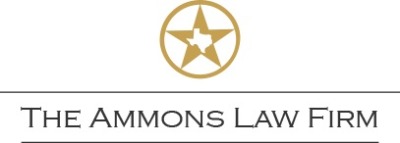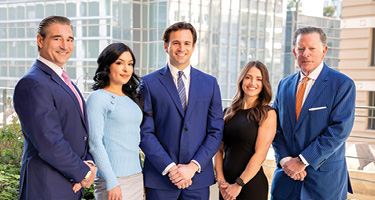Technical Evolution in Automotive Failure Analysis and Defect Identification
Automotive product liability has entered a new era of technical complexity, requiring practitioners to develop sophisticated analytical approaches when investigating vehicle system failures. Recent judicial decisions have reinforced heightened evidentiary standards for establishing defect causation, creating significant challenges for Product Liability Attorneys pursuing these claims. Consulting experienced product liability attorneys can help determine how defect causation may be proven in complex automotive cases. Landmark decisions like Faddoul v. Toyota Motor Corp. (2021 WL 2350400) and Trull v. Volkswagen Group of America, Inc. (990 F.3d 34) have established that plaintiffs must provide precise technical evidence demonstrating how specific design or manufacturing deficiencies contributed to the injury-causing sequence.
In response to these heightened standards, effective litigation approaches now incorporate advanced engineering methodologies to analyze failure modes. These include non-destructive component testing using computerized tomography imaging, finite element analysis to model crash dynamics, and event data recorder analysis that captures pre-crash vehicle parameters. In cases involving electronic systems, protocol-level diagnostic analysis of Controller Area Network (CAN) bus communications has become essential to isolate precise failure points within increasingly integrated vehicle systems. Recent litigation has demonstrated that courts expect practitioners to go beyond traditional accident reconstruction to establish how a component failed, why it failed, and whether an alternative design could have prevented the specific injury pattern suffered by the plaintiff. This level of technical analysis requires collaboration with engineers holding domain-specific expertise in vehicle subsystems ranging from occupant restraints to electronic stability controls to battery management systems in electric vehicles.
Regulatory Framework Integration and Preemption Challenges
The automotive industry operates within a complex regulatory structure primarily governed by the National Highway Traffic Safety Administration (NHTSA) through Federal Motor Vehicle Safety Standards (FMVSS). However, Personal Injury Attorneys practicing in this field recognize that courts have increasingly refined approaches to evaluating how regulatory compliance intersects with common law tort obligations. The regulatory compliance defense has received renewed attention following decisions like Williamson v. Mazda Motor of America, Inc. (562 U.S. 323) and Dashi v. Nissan North America, Inc. (445 F. Supp. 3d 1051), which have clarified when federal standards preempt state tort claims in automotive cases. In such complex preemption scenarios, working with skilled auto defect attorneys may help identify the right legal strategy.
Effective litigation requires sophisticated analysis of whether specific FMVSS standards establish both minimum and maximum safety requirements (potentially triggering preemption) or merely set a regulatory floor above which manufacturers maintain independent obligations to implement reasonable safety measures. Discovery often focuses on manufacturer interactions with NHTSA during the regulatory comment process, which may reveal corporate knowledge of safety risks beyond those addressed in final regulations. Particularly valuable are early warning reporting data submissions, technical service bulletins, and manufacturer communications with NHTSA's Office of Defects Investigation, which may establish notice of potential defects prior to formal recall actions. Courts have increasingly recognized that manufacturers may not always avoid liability merely by demonstrating minimal regulatory compliance, especially when evidence suggests awareness of risks not fully addressed by existing safety standards. This evolving jurisprudence creates both challenges and opportunities for practitioners navigating the intersection of administrative regulations and product liability principles.
Global Supply Chain Analysis and Multi-Party Liability Apportionment
Modern vehicle production involves intricate global supplier networks with components designed, manufactured, and integrated by dozens of entities before final assembly. Product Liability Lawyers pursuing automotive claims must develop comprehensive approaches to identifying all potentially responsible parties while navigating complex questions of component origin, design responsibility, and contractual risk allocation. This requires analysis of manufacturing source documents, supplier quality agreements, component validation testing, and contractual indemnification provisions that may significantly impact litigation strategy.
Courts have increasingly refined approaches to apportioning liability across automotive supply chains, as demonstrated in cases like In re General Motors LLC Ignition Switch Litigation (427 F. Supp. 3d 374) and Wilden v. Laury Transportation, LLC (901 N.W.2d 802), which address allocation of responsibility between OEMs and component suppliers. Effective litigation requires understanding of whether specific defects originated from design specifications provided by the OEM or from manufacturing or validation failures attributable to suppliers. Discovery often focuses on design verification plans, supplier qualification processes, and component testing protocols to establish which entities had knowledge of potential defects during product development. Expert analysis may include manufacturing process validation, statistical quality control assessments, and comparisons against industry-standard supplier management practices. These cases frequently involve complex indemnification disputes between manufacturers and suppliers that may significantly impact resolution strategies. Courts have demonstrated increased willingness to hold OEMs accountable for component integration and validation even when specific parts were manufactured by suppliers, reflecting judicial recognition of the OEM's ultimate responsibility for system-level safety performance regardless of sourcing decisions.
Electronic Systems Litigation and Software-Induced Defects
The transformation of vehicles from primarily mechanical systems to sophisticated electronic platforms has fundamentally altered the landscape of automotive product liability. Personal injury cases increasingly involve failures in electronic throttle controls, stability systems, automatic emergency braking, and advanced driver assistance technologies. These claims present unique evidentiary challenges requiring practitioners to develop methodologies for analyzing software architecture, control algorithms, sensor integration, and human-machine interface design. Recent litigation including Massie v. General Motors LLC (2020 WL 6287645) and Holbrook v. Lyft, Inc. (515 F. Supp. 3d 1078) demonstrates the evolving judicial approaches to cases involving complex electronic systems and partial automation.
Effective litigation requires analysis of software development lifecycle documentation, validation testing records, edge-case scenario evaluations, and over-the-air update histories. Discovery often focuses on fault detection capabilities, failsafe design methodologies, and whether manufacturers adequately tested for reasonably foreseeable operating conditions and user interactions. Expert testimony increasingly involves specialists in automotive cybersecurity, functional safety standards (ISO 26262), Software Product Integrity processes, and human factors engineering. Courts have demonstrated willingness to recognize software design and validation as subject to the same liability principles as physical components, holding manufacturers accountable for code-level deficiencies that compromise vehicle safety. These cases often involve analysis of whether manufacturers appropriately communicated system limitations to consumers or created unreasonable expectations about technology capabilities through marketing materials. As vehicles become increasingly dependent on software systems, courts have recognized manufacturers' obligations to implement adequate validation protocols, cybersecurity protections, and update mechanisms to address emerging safety risks throughout the vehicle's operational life.
Post-Market Surveillance Obligations and Corporate Response Litigation
Automotive manufacturers maintain continuing safety obligations after vehicles enter the stream of commerce, including monitoring field performance, investigating potential defects, and implementing timely remedial measures when safety concerns emerge. Product Liability Attorneys increasingly pursue claims centered on alleged failures in these post-sale obligations, particularly when evidence suggests manufacturers failed to act promptly on internally identified safety concerns. Recent decisions including In re General Motors LLC Ignition Switch Litigation (2016 WL 874778) and Sloan v. General Motors LLC (287 F. Supp. 3d 840) have reinforced manufacturers' legal duty to implement timely and effective remedial measures when field data indicates potential safety defects.
These cases require detailed analysis of Early Warning Reporting System data, warranty claim patterns, field engineering reports, and internal risk assessment protocols to establish manufacturer knowledge of emerging safety issues. Discovery often focuses on Product Safety Committee minutes, defect investigation timelines, and corporate decision-making processes concerning potential recalls. Particularly significant are comparative analyses of how manufacturers handled similar safety concerns across different vehicle platforms or markets, which may reveal inconsistent safety practices. Courts have shown increasing willingness to permit punitive damages claims when evidence demonstrates deliberate concealment of known defects or implementation of inadequate remedial measures despite awareness of serious safety risks. Recent litigation has expanded manufacturer post-sale obligations to include monitoring social media reports, conducting proactive data analysis of connected vehicle telemetry, and implementing over-the-air updates to address emerging electronic system vulnerabilities. These cases highlight the evolution of post-sale duties beyond traditional recall obligations to encompass comprehensive lifecycle safety management for increasingly complex and connected vehicles.
Crashworthiness Doctrine Evolution and Enhanced Injury Claims
The crashworthiness doctrine, which holds manufacturers liable for enhanced injuries resulting from inadequate occupant protection regardless of crash causation, continues to evolve significantly in automotive product liability jurisprudence. Personal Injury Lawyers pursuing these "second collision" claims must develop comprehensive approaches to demonstrating how specific vehicle design characteristics exacerbated injury outcomes beyond what would have occurred in a reasonably designed vehicle. Recent decisions including Hackett v. FCA US LLC (298 F. Supp. 3d 1308) and Allstate Ins. Co. v. Toyota Motor Engineering & Mfg. N. Am., Inc. (847 F. Supp. 2d 1142) have refined evidentiary standards for these claims while reinforcing manufacturer obligations to implement reasonable occupant protection systems.
Effective litigation requires sophisticated accident reconstruction, injury biomechanics analysis, and comparative safety system evaluation to establish the causal relationship between design characteristics and specific injury patterns. Expert testimony increasingly incorporates computational modeling, including finite element analysis and parametric human body models, to demonstrate how alternative designs would have affected injury outcomes. Discovery focuses on manufacturer crash test data, computer-aided engineering analyses, and design development records that may reveal trade-offs between occupant protection and other design priorities. Courts have generally maintained the principle that manufacturers should design vehicles to provide reasonable protection in foreseeable crash scenarios, even when they are not responsible for the initial collision. Recent crashworthiness litigation has increasingly addressed emerging vehicle architectures, including high-voltage systems in electric vehicles, ultra-high-strength steel structures, and advanced restraint systems with electronic pre-tensioners and multiple deployment thresholds. These cases require practitioners to develop technical proficiency with evolving vehicle architectures while building on established crashworthiness principles to address novel injury scenarios in next-generation vehicles.
Damages Quantification and Life Care Planning in Catastrophic Injury Cases
Automotive product defects frequently result in catastrophic injuries requiring complex approaches to damages quantification that accurately reflect lifetime care requirements and economic impacts. Product Liability Attorneys must develop comprehensive methodologies for projecting future medical needs, adaptive technology requirements, and lost earning capacity that withstand rigorous judicial scrutiny. Recent decisions including Jones v. Ford Motor Company (2019 WL 3891177) and Rodriguez v. Hyundai Motor Company (458 P.3d 135) have reinforced the necessity for scientifically validated life care planning based on evidence-based medicine and economic analysis.
Effective damages presentation requires collaboration between medical specialists, life care planners, economists, and vocational rehabilitation experts who can collectively develop and defend comprehensive projections of injury-related costs. Recent judicial decisions have shown increasing acceptance of damages components including advanced adaptive technologies, home automation systems, and attendant care requirements that support maximum functional independence for injured plaintiffs. These projections must incorporate medical advancements likely to occur during the plaintiff's lifetime while accounting for technology obsolescence, replacement schedules, and inflation factors specific to medical services. Expert testimony increasingly incorporates functional capacity evaluations, neuropsychological assessments, and detailed analysis of how specific injuries impact daily living activities to justify life care plan components. Courts have generally accepted that damages should reflect the full spectrum of resources reasonably needed to support quality of life and functional capability, rather than addressing only basic medical needs. These comprehensive damages approaches recognize that catastrophic injuries from automotive defects create multi-dimensional impacts requiring integrated support systems throughout the injured person's lifetime. When these injuries occur, an attorney for injury claim can help ensure damages reflect long-term care and economic needs.
This content is for informational purposes only and does not constitute legal advice. No attorney-client relationship is formed by reading this article. Laws may vary by jurisdiction. Please consult a qualified attorney licensed in your state for legal guidance specific to your situation.















